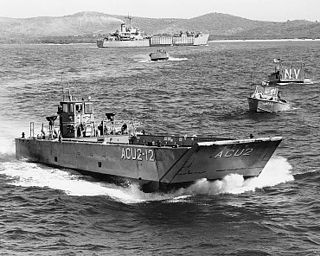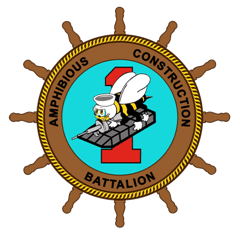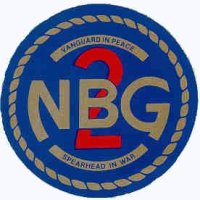
USS Raleigh (LPD-1), the lead ship of her class of amphibious transport docks, was the fourth ship of the United States Navy named for the capital of North Carolina, which in turn honors the English explorer Sir Walter Raleigh, the first to attempt the establishment of an English settlement in the United States of America.

USS Trenton (LPD-14), an Austin-class amphibious transport dock, was the third ship of the United States Navy to be named for the capital of New Jersey. In 2007, it was sold to the Indian Navy and renamed INS Jalashwa.

Landing craft are small and medium seagoing watercraft, such as boats and barges, used to convey a landing force from the sea to the shore during an amphibious assault. The term excludes landing ships, which are larger. Production of landing craft peaked during World War II, with a significant number of different designs produced in large quantities by the United Kingdom and United States.

The LCM-8 is a river boat and mechanized landing craft used by the United States Navy and Army during the Vietnam War and subsequent operations. They are currently used by governments and private organizations throughout the world. The acronym stands for "Landing Craft Mechanized, Mark 8".

The United States Naval Special Warfare Command (USNSWC), also known as, is the naval component of United States Special Operations Command, the unified command responsible for overseeing and conducting the nation's special operations and missions.

Joint Expeditionary Base–Little Creek (JEB–LC), formerly known as Naval Amphibious Base Little Creek and commonly called simply Little Creek, is the major operating base for the Amphibious Forces in the United States Navy's Atlantic Fleet. The base comprises four locations in three states, including almost 12,000 acres (4,900 ha) of real estate. Its Little Creek location in Virginia Beach, Virginia, totals 2,120 acres (860 ha) of land. Outlying facilities include 350 acres (140 ha) located just north of Training Support Center Hampton Roads in Virginia Beach and 21 acres (8.5 ha) known as Radio Island at Morehead City, North Carolina, used for U.S. Coast Guard ships and personnel as well as serves as an amphibious embarkation/debarkation area for U.S. Marine Corps units at Marine Corps Base Camp Lejeune, North Carolina. It is also home to the Naval School of Music.

USNS Sacagawea (T-AKE-2), a Lewis and Clark-class dry cargo ship, is the third ship operated by the United States Navy to be named for Sacagawea, the Shoshone woman who acted as guide and interpreter for the Lewis and Clark Expedition, and one of the few United States Navy ships named for women.
PHIBRON is a United States Navy abbreviation for Amphibious Squadron. It is a tactical and administrative organization composed of amphibious assault shipping to transport troops and their equipment for an amphibious assault operation.

A Landing Craft Utility (LCU) is a type of boat used by amphibious forces to transport equipment and troops to the shore. They are capable of transporting tracked or wheeled vehicles and troops from amphibious assault ships to beachheads or piers.

Navy Expeditionary Combat Command (NECC) serves as the single functional command to centrally manage current and future readiness, resources, manning, training and equipping of the United States Navy's 21,000 expeditionary forces who are currently serving in every theater of operation. The NECC was established in January 2006. NECC is a subordinate command of the Navy's Fleet Forces Command.

Amphibious Construction Battalion ONE is an amphibious construction battalion in the United States Navy based in Coronado, California. Amphibious Construction Battalion TWO is its sister unit based in Little Creek, Virginia.

The LCM-1E is a class of amphibious mechanized landing craft manufactured by Navantia at their factory in San Fernando. These craft are intended to deliver troops and equipment onshore from amphibious assault ships during amphibious assaults. The craft are operated by the Spanish Navy and the Royal Australian Navy, and have been ordered by the Turkish Navy.

The Khmer National Navy was the naval component of the Khmer National Armed Forces (FANK), the official military of the Khmer Republic during the Cambodian Civil War between 1970 and 1975.

Assault Craft Unit ONE, (ACU-1) is a Pacific Ocean Maritime Prepositioning Force in the United States Navy operated under Naval Beach Group ONE out of Naval Amphibious Base (NAB) Coronado with a Forward Detachment in Sasebo, Japan. ACU-1's force consists of Landing Craft Utility (LCU) boats, Landing Craft Mechanized (LCM), Mark 8 boats, and Maritime Prepositioning Force Utility Boats (MPFUBs). The sister unit of ACU-1 is Assault Craft Unit 2 in Naval Amphibious Base Little Creek, Virginia.

The Maritime Prepositioning Force (MPF) Utility Boat (MPFUB) is a commercially designed utility craft used primarily to move personnel and light equipment during MPF offload operations. The 41 foot long, high-speed landing craft are replacing the Navy’s existing LCM-8 craft as part of the United States Navy's Improved Navy Lighterage System (INLS) in support of pre-positioned Marine Amphibious assault missions. Additional missions include supporting waterborne force protection, transportation of personnel and materials, medical evacuation, salvage, damage control, and repair operations.

Naval Beach Group One, (NBG-1) is a United States Navy amphibious unit based at Naval Amphibious Base Coronado in Coronado, California. Naval Beach Group Two is its sister unit based at Naval Amphibious Base Little Creek, Virginia.

Naval Beach Group Two, (NBG-2) is a United States Navy amphibious unit based at Naval Amphibious Base Little Creek, Virginia Beach, Virginia. Naval Beach Group One is its sister unit based in Naval Amphibious Base Coronado in Coronado, California.

Mk III LCU class vessels were follow on class of Mk II LCU operated by the Indian Navy and were meant to augment the Indian Navy's amphibious capability. The ships were deployed for maritime roles like maritime security, beaching, un-beaching, humanitarian relief operations and evacuation from distant islands, search and rescue operations and peace-keeping missions. The landing craft were meant for use by amphibious forces to transport equipment and troops to the shore. They were capable of transporting tracked or wheeled vehicles and troops from amphibious assault ships to beachheads or piers. The landing craft were carried on board amphibious assault ships to the objective area. Built and delivered between 1986-87 the mission of the LCU was to land/retrieve personnel and equipment during amphibious operations. LCU's help land personnel and equipment after the initial assault waves of an amphibious operation.

Naval Support Activity Danang or NSA Danang was a United States Navy logistics support organization located in Danang, South Vietnam active from October 1965 to April 1972.
Naval Beach Unit Seven, (NBU-7) is a United States Navy amphibious unit based at United States Fleet Activities Sasebo in Sasebo, Japan.



















